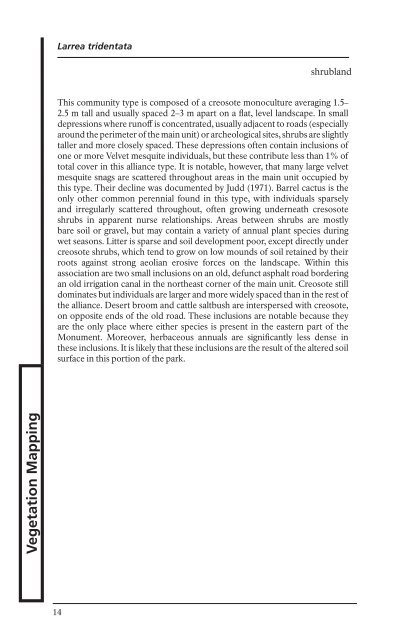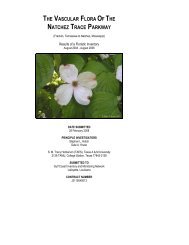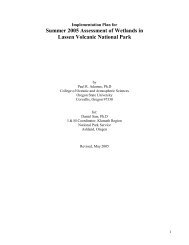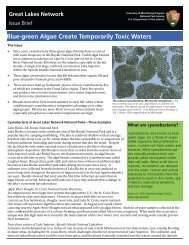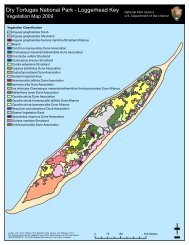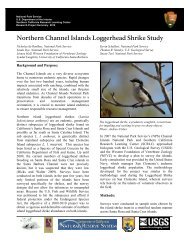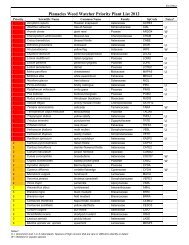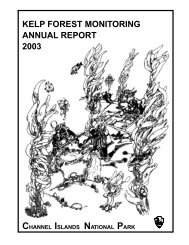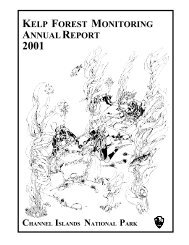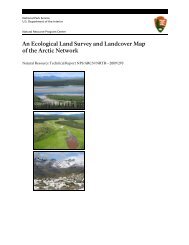Plants of Casa Grande Ruins National Monument - NPS Inventory ...
Plants of Casa Grande Ruins National Monument - NPS Inventory ...
Plants of Casa Grande Ruins National Monument - NPS Inventory ...
Create successful ePaper yourself
Turn your PDF publications into a flip-book with our unique Google optimized e-Paper software.
Vegetation Mapping<br />
14<br />
Larrea tridentata<br />
shrubland<br />
This community type is composed <strong>of</strong> a creosote monoculture averaging 1.5–<br />
2.5 m tall and usually spaced 2–3 m apart on a flat, level landscape. In small<br />
depressions where run<strong>of</strong>f is concentrated, usually adjacent to roads (especially<br />
around the perimeter <strong>of</strong> the main unit) or archeological sites, shrubs are slightly<br />
taller and more closely spaced. These depressions <strong>of</strong>ten contain inclusions <strong>of</strong><br />
one or more Velvet mesquite individuals, but these contribute less than 1% <strong>of</strong><br />
total cover in this alliance type. It is notable, however, that many large velvet<br />
mesquite snags are scattered throughout areas in the main unit occupied by<br />
this type. Their decline was documented by Judd (1971). Barrel cactus is the<br />
only other common perennial found in this type, with individuals sparsely<br />
and irregularly scattered throughout, <strong>of</strong>ten growing underneath cresosote<br />
shrubs in apparent nurse relationships. Areas between shrubs are mostly<br />
bare soil or gravel, but may contain a variety <strong>of</strong> annual plant species during<br />
wet seasons. Litter is sparse and soil development poor, except directly under<br />
creosote shrubs, which tend to grow on low mounds <strong>of</strong> soil retained by their<br />
roots against strong aeolian erosive forces on the landscape. Within this<br />
association are two small inclusions on an old, defunct asphalt road bordering<br />
an old irrigation canal in the northeast corner <strong>of</strong> the main unit. Creosote still<br />
dominates but individuals are larger and more widely spaced than in the rest <strong>of</strong><br />
the alliance. Desert broom and cattle saltbush are interspersed with creosote,<br />
on opposite ends <strong>of</strong> the old road. These inclusions are notable because they<br />
are the only place where either species is present in the eastern part <strong>of</strong> the<br />
<strong>Monument</strong>. Moreover, herbaceous annuals are significantly less dense in<br />
these inclusions. It is likely that these inclusions are the result <strong>of</strong> the altered soil<br />
surface in this portion <strong>of</strong> the park.


